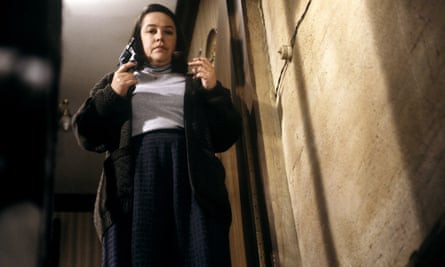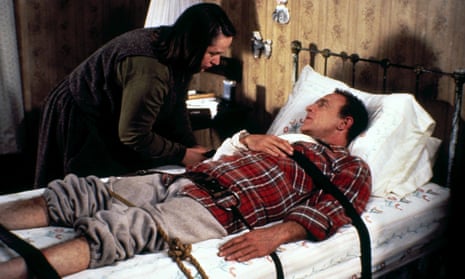Any mixture of Stephen King, William Goldman and Rob Reiner ought to be out of the ordinary. If you add to that an Oscar-winning performance by a relatively unknown actress, you’ve got something reasonably special. It’s called Misery (Odeon, Leicester Square, 18) and you’d have to be churlish not to be entertained.
Predicated, like most Hollywood box-office swingers, on a one-line concept – famous writer gets kidnapped by number one fan – the film hasn’t any depth to speak of, but is consistently shrewd enough not to go totally obvious ways. And the audacity in casting Kathy Bates as the dotty fan pays considerable dividends.
Firstly, she is not a face we know, which aids rather than undermines conviction. Secondly, she is not your conventional American screen actress, glamorous unto death. She almost looks like a real person the sort you might find in a deserted area of Colorado in comfortable snow boots. Thirdly, she is a fine actress who knows that less in the way of a ‘performance’ is often more and that strong moments have to be severely rationed.
She plays Annie Wilks, a nurse with a murky past, who digs Paul Sheldon, famous romantic novelist, out of his crashed car in the icy wastes, nurses the badly crippled man back to something like health and then imposes her will on him. It is all to the good of the film that it is not sexual.
He’s just finished an as yet unpublished novel about his early days in the slums of Brooklyn, in total contrast to the romantic flim-flam that’s made him a fortune if not a very enduring reputation. She’s just finished his last tome starring Misery, the 17th century fictional heroine she is obsessed with.

But, alas, he has killed her off, and committed the cardinal sin of profanity in his new book. He will be held captive until the new manuscript is burnt and Misery brought to life again in a new guise.
Bates pushes her character this way and that, dispensing kindness and threat in equal proportions. It’s clear she’s mad but, not at first, that she’s absolutely barking. Meanwhile, James Caan as Sheldon goes from pain-filled gratitude to anger and terror with all the aplomb of a man who started his career on screen a quarter of a century ago frightening an immobile Olivia De Havilland half to death in Lady In A Cage.
This performance is at least as good as Bates’, and Richard Farnsworth as the eccentric Sheriff, of sounder mind than he seems, is not far behind.
Reiner’s film, the perfect 90-minuter, is sometimes a little stretched at 107 minutes. Nevertheless it maintains its tension well, plays enough tricks on us so that we don’t ever treat anything quite seriously and Goldman’s script has enough good lines and situations to keep one interested in exactly what is coming next.
In racing parlance, it is by Whatever Happened To Baby Jane out of Fatal Attraction, and a good example of a popular film that doesn’t take its audience for granted.

Comments (…)
Sign in or create your Guardian account to join the discussion